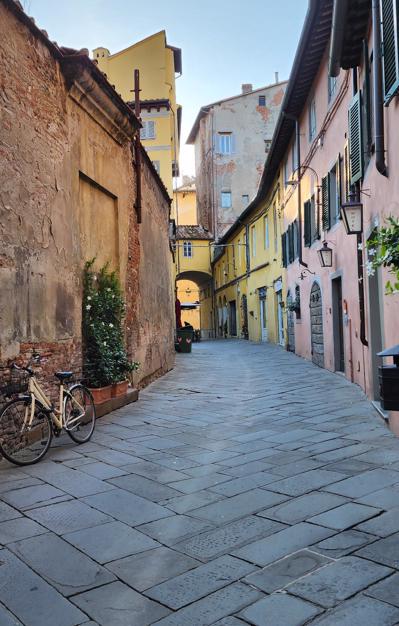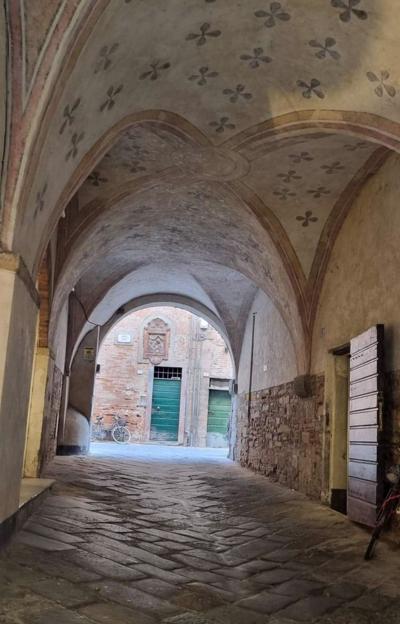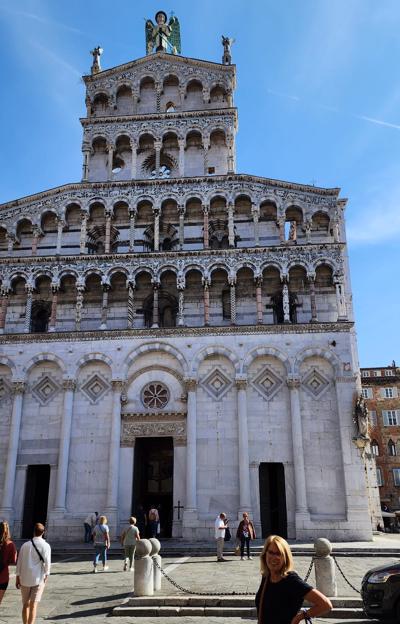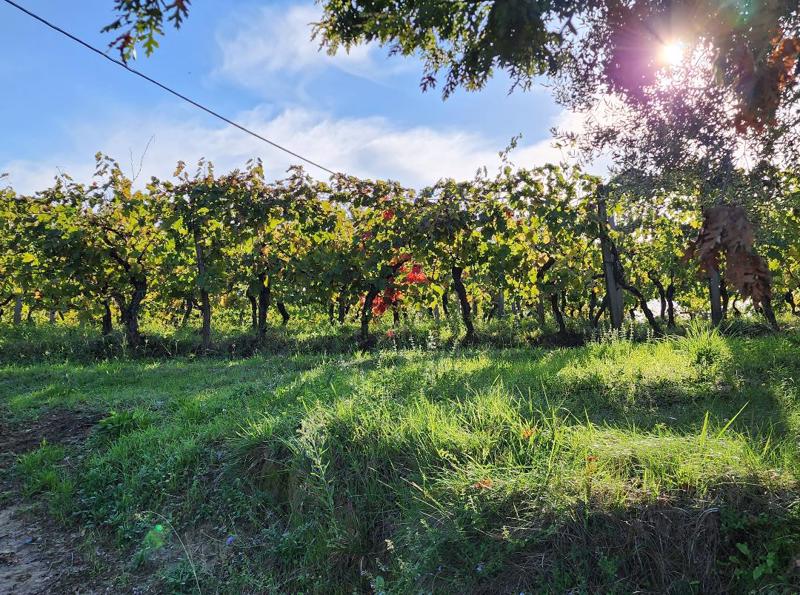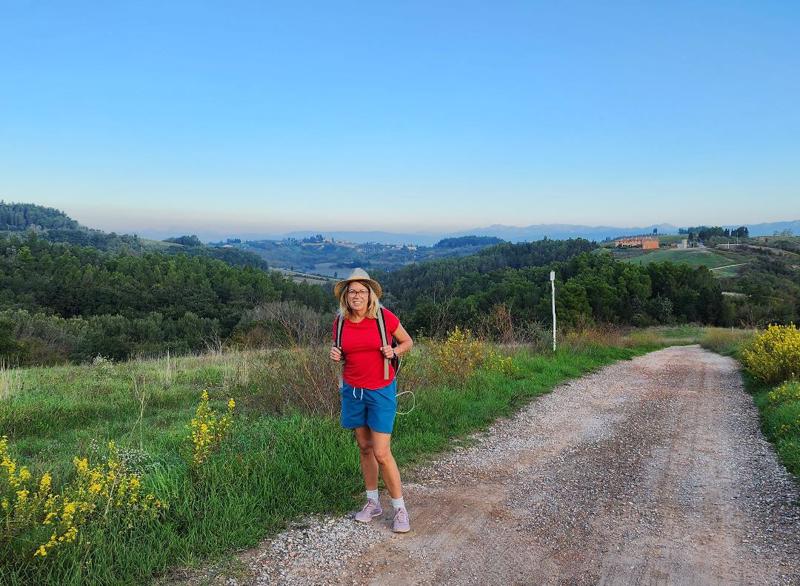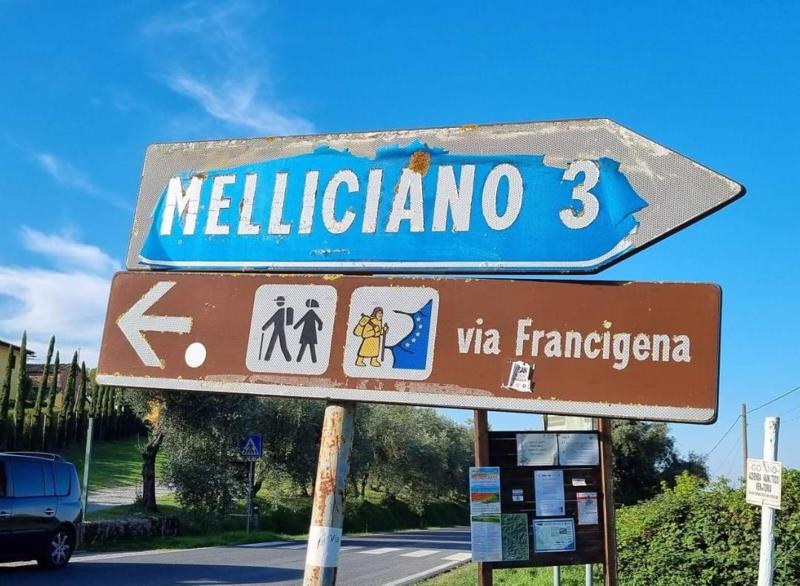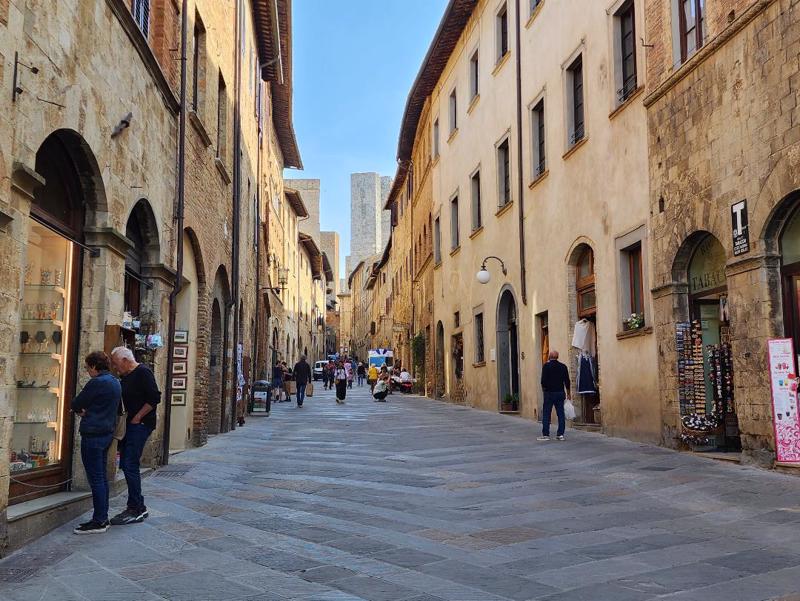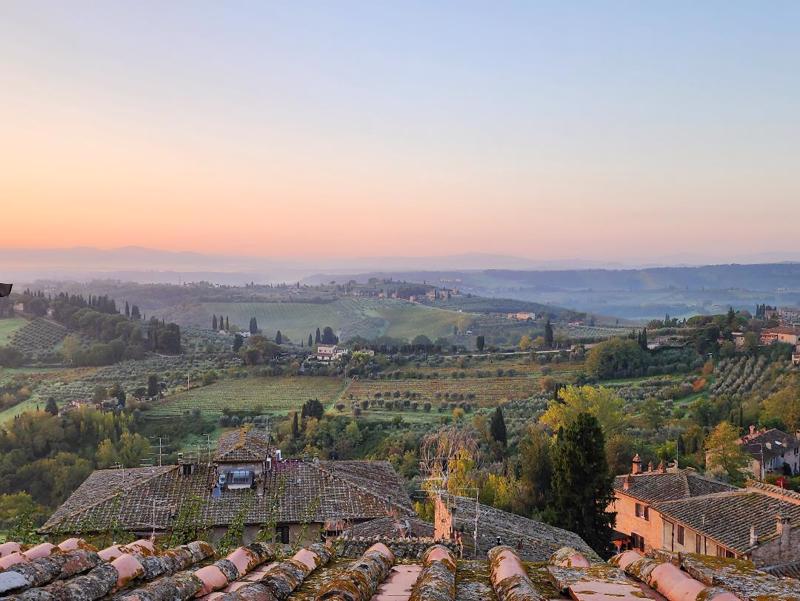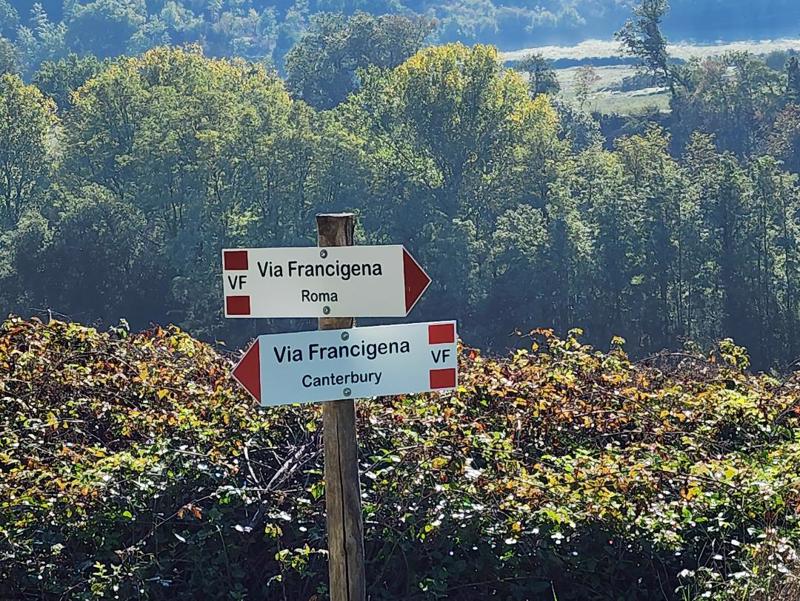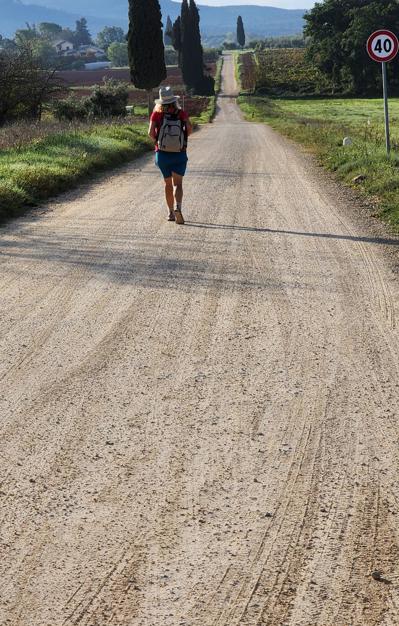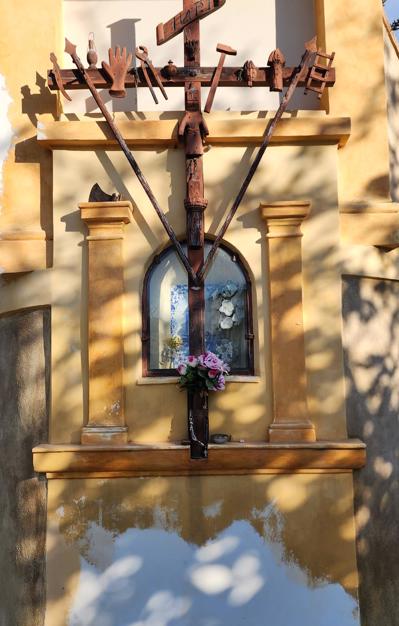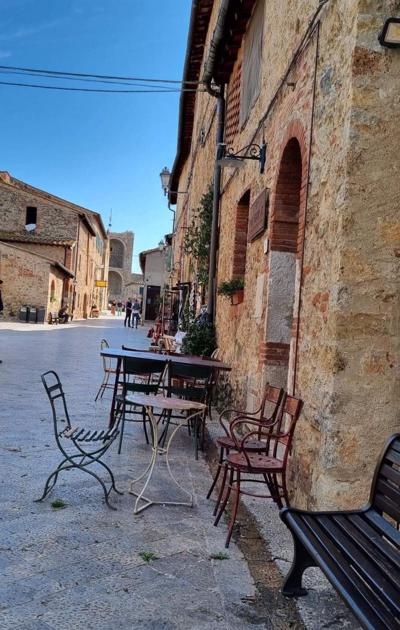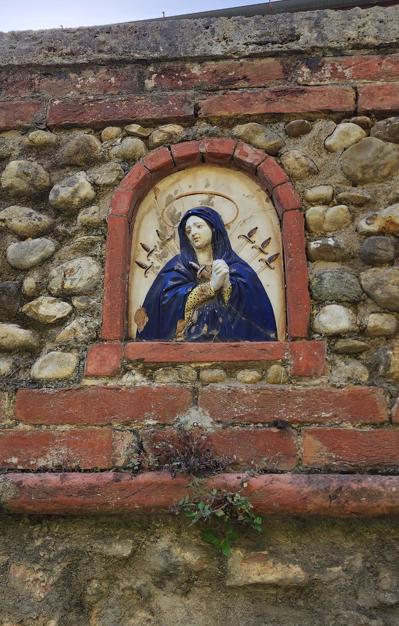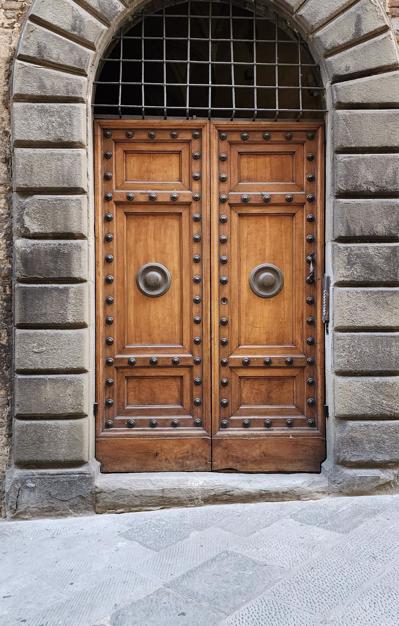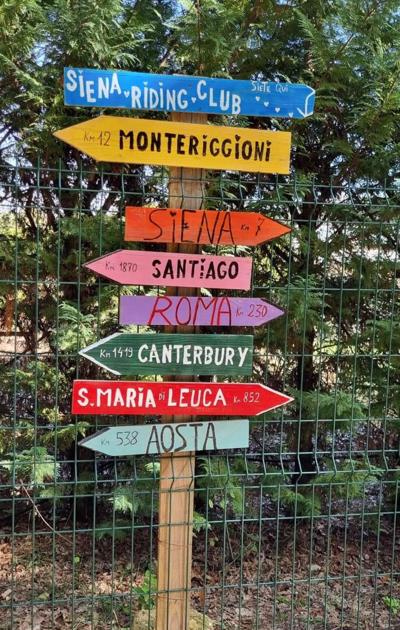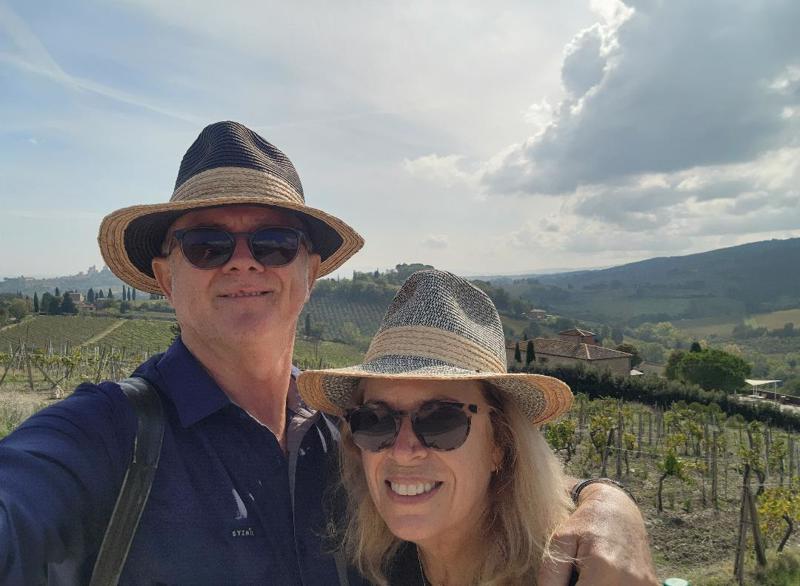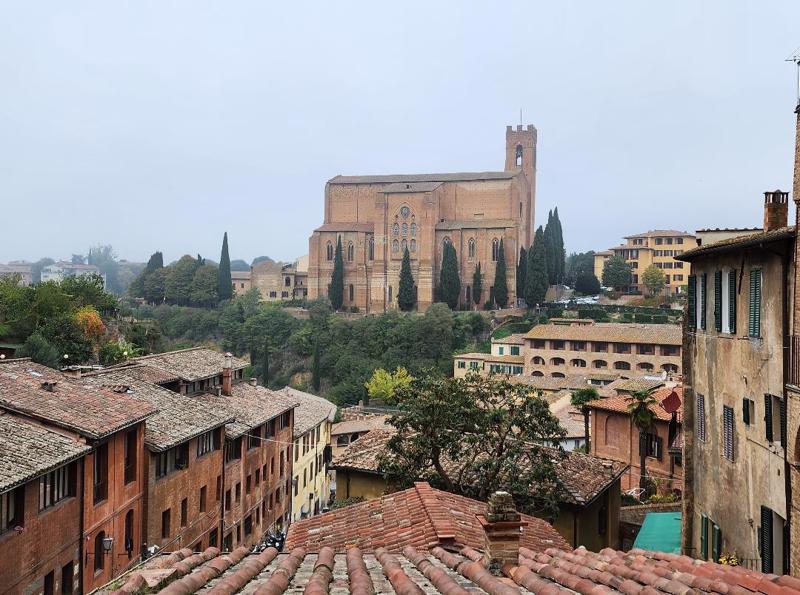25 Oct 22
Under the Tuscan sun – conquering Italy’s Via Francigena
After a long travel hiatus, Robyn and Chris from Broome in Western Australia’s Kimberley region recently headed overseas for a 6 week adventure in Italy, which included a week walking the Tuscan section of the Via Francigena, a 1000-year-old pilgrimage route that extends in its entirety around 2000km from Canterbury in England all the way to Rome. Its name is a nod to the fact that it travels through France, but during its history, the route was also known as the Via Romea (way to Rome) for the city where it ends.
Enjoy a big dose of travel inspiration from their travel diaries…
Lucca to San Miniato and a generous amount of truffle
Today we head to San Miniato to start our trek along the Via Francigena. Lucca is the official start but we are not walking from here. Instead it’s a couple of trains to San Miniato where we will walk 20km the following day. We take the opportunity for one last stroll around Lucca before heading to the train station. We stumble across some more contemporary public art as well as marvel at the amount of pavilions being constructed for the manga cosplay festival being held later in the month.
The day is largely lost transiting and trying to match up connecting trains. We finally arrive at our hotel at about 4pm. We dump our stuff and go exploring. San Miniato is a very small village at one end of the pilgrims’ walk the Via Frangicena. We find a nice pizzeria, go home for a rest, then back down town for dinner. We start with pre-dinner Aperol spritzers from Ethan’s, the best bar in town we are told.
We dine at a ristorante that specialises in truffle. Nothing on the menu is truffle free. We have meat skewers with fondue and truffle; it’s a very generous amount of truffle and delicious. It’s an early night though, as tomorrow we start the Via Frangicena with a 20km walk.
Gambassi and the pheasant
Today we begin our walk along the via Francigena to Gambassi about 20km away. We are collected by taxi at 8am and driven to the start point of the Via Frangicena just outside of town, a gravel track running through rolling hills. We could have walked this section from the hotel, but it’s all on busy sealed road and this cuts 5km from the journey.
Our starting point is beautiful. We are high above a valley that is blanketed in mist. Within 5 minutes of walking down the gravel track we are in isolation, just us, the path and Tuscany. We pass by olive groves and grape vines, reminiscent of our time on the Camino in Spain. It’s a clear sky day, in the low to mid-20s. The track is continually ascending and descending with a few flat bits in the middle. We’ve learned to bend our knees in a slightly exaggerated manner on the descents to take the stress off our knees. This makes us look older, but feel younger and a little more agile.
We pass several ruins and interesting abandoned farm houses. The tranquility is broken regularly by the sound of gunfire. Around the corner and Robyn startles a pheasant that was sitting under a bush. We guess that it’s pheasant the hunters are after. For most of the day we see no other walkers. The landscape slowly changes as the hours pass and we regularly stop to marvel at Tuscany. We stop under some shady trees for a half hour to rest and enjoy our packed lunch of fruit, walnuts, bread and tomatoes.
We pass an interesting cemetery where everyone seems to be interned in the walls. As we are walking around it a large green snake slithers past. We weren’t expecting snakes in Italy.
Our accommodation tonight is new, but built in traditional Tuscan style. The property is spread over several acres. Our trattoria booking is for 8pm. Just down some steps, by the pool then through a tunnel of trees.
San Gimignano and the world’s best gelato
Today our pilgrimage takes us in search of the world’s best gelato, which we are told is in San Gimignano, 18km away. At breakfast this morning I asked our host about the hunters. They are after wild boar, pheasant and rabbit. There are designated hunting days and yesterday was one of them. We have a hearty breakfast as there are no villages or cafes on our way to San Gimignano and walk out of the hotel and back onto the Via Fancigena. We fall into a steady pace. The sound of gunshots is replaced with the sound of olive trees being shaken to harvest the fruit.
For the first 2 hours there is a heavy fog. Once it lifts, we are surrounded by amazing panoramic vistas. Tuscany is a truly beautiful region. Today we meet several other groups of pilgrims. One English group of two women and a man, older than us and annoyingly faster walkers, and a group of eight Americans. There are so many Americans here in Italy.
We stop for a break under some shady trees and enjoy a banana, apple, pastry from breakfast, and liquorice. We continue our journey. The path changes regularly from sealed road to gravel path. We pass more ruins, olive groves and vineyards. Then we turn on to a road and the medieval village of San Gimignano is a few km in front of us, its 12th-century tower dominating the skyline. The last few km is an easy walk into the village.
We arrive at our hotel at around 2pm and notice a long queue across the piazza. It’s the gelato shop we were told about. A sign above the store proudly boasts, “Named world’s best gelato”. Robyn tries a flavour called Italian Garden, which contains, basil, tomato and other ingredients that shouldn’t work in a gelato but do. We get a dinner recommendation from the hotel and book a table at a Tuscan restaurant. We’ve become so accustomed to limoncello that we’re now offended if its not offered after the meal.
A rest for the weary in the medieval village
We’re happy to spend the day exploring this beautiful medieval village with its dual towers described as 12th century sky scrapers.
After breakfast we take a leisurely stroll around the village exploring the many laneways and passing fellow peregrinos. Outside the walls lies modern San Gimignano, inside is the historic and medieval San Gimignano, the contrast between the two quite extreme. We take a stroll to find the location of our wine tasting that we have booked for this evening. Just around the corner in the garden we stumble across a medieval monk reciting poetry from Dante Alighieri who, having been exiled from Fiorenza, wandered the Via Francigena delivering a moral and spiritual message contained in the triplets of the Devina Commedia. He’s a great performer with a rich deep voice. I just wish I knew what he was saying.
For lunch we find a spot on the steps of the Duomo di San Gimignano and enjoy a porchetta and fromage roll and two plastic cups of chianti from a street food stall. Everyone drinks in public, but we have seen no public drunkenness. After a brief rest we go back to the top of the village wall for our wine tasting session. Our sommelier Andrea is very knowledgeable. Our session is all about the San Gimignano region, but he is very comfortable making comparisons to wines from the Hunter Valley and Margaret River. All the wine we taste is specific to the San Gimignano region, including the famous Vernaccia.
For dinner, we’re at a restaurant packed with locals. We enjoy black Angus carpaccio followed by an amazing mushroom ravioli. We finish the night with the traditional limoncello we have come to love.
The long walk to Gracciano and Henry the 8th
It’s our longest scheduled walk today – 21km to Gracciano. On the way out of town we find a shop open and get some salami and cheese. For the first 30 minutes we are walking through the outer and new parts of San Gimignano. We meet our first Italian peregrino – Julia, a young woman from Milan. We share the road for an hour or so and swap stories. Most of today’s trek is on gravel paths through dense woodland.
Gunshots sporadically interrupt the serenity of the walk. Julia tells us the origin of the Via Frangicena, as told to her the previous night by a nun who ran the hostel where she stayed. Julia explained the path connected Canterbury in the UK to Rome and had something to do with wool, the Pope and a blessing. I imagine this was also a well-trodden path by the emissaries of King Henry the 8th when he was seeking his divorce.
We pass by rich clay soils and navigate several creek crossings. They are not unlike Kimberley seasonal creeks with their high steep sloped banks. Luckily we are at the end of the summer and the creeks haven’t really started to flow. Only one has some water but stepping stones allow us to get across without getting our shoes wet. There are a lot of big ascents and descents on loose gravel and rocky paths that are difficult.
About half way to Gracciano we come across a family out collecting mushrooms. “Buongiorno”, we call. “Bonjour” they reply. Not far from the French mushroom collectors there is a picnic table, perfect for our lunch. After a 20 minute break we push on. We are passed by a younger Italian couple trekking, a few cars, some off-road motor bikes and several mountain bikes. We emerge from the woods and into rural farmland, then Gracciano is in front of us. We walk past several modern apartment blocks but there are no shops or town centre; curiously nothing like the historic villages we’ve stopped at so far. Our hotel is on the other side of the main group of apartments and someway off the road and we reach it 21km, 6 hours and 4 aching legs after leaving San Gimignano.
Monteriggioni and two twists of fate
Today is a much easier day – just 13km into another walled village, Monteriggioni. We get back on the Via Frangicena by 8.30am not long after the sun has risen. For the first hour, it’s just us the track, and the warm Tuscan sun. We pass more grape vines and see spent cartridges. The first part of our track has steep rocky inclines. We’re glad to encounter them early in the day rather that later when weary. We pass by small Tuscan villages, more olive groves, then we are in the woods. We pass a hunter in camouflage. Then we pass another, and another, all in camouflage, none of them particularly friendly.
While walking we get a message saying our original accommodation has been cancelled due to electrical problems. We are now checked into a hotel inside the walled village. This twist of fate cuts 2.5km off today’s walk. We walk through some small villages, across some fields and then suddenly the small medieval village of Monteriggioni is up ahead. The last 100m is on a very steep inclined loose gravel track, so we take one determined and cautious step at a time. The village is completely encompassed by the wall. Our hotel is right in centre and is the only hotel within the walled village. We check-in, take a quick shower then go exploring.
The village is so old it makes us contemplate the rich cultural and social history of Europe, interspersed with political upheaval spanning millennia. We try out three of the four ristorantes in the village. One for lunch, one for pre-dinner Aperol spritzers and the third for dinner, where we have wild boar stew. The owner proudly boasting that his 85-year-old father had shot it.
In our second twist of fate we see Julia walking across the piazza. It’s great to catch up again. She is staying at the hostel two doors up from the hotel. We say goodnight, and maybe we’ll catch up again on the road to Siena tomorrow.
Conquering the Via Francigena in Siena
Our final day on the Via Francigena will take us into Siena, 22km down the road. We opt for a taxi to drop us 2km up the road. We are out of the taxi and back on the Via Francegina by 9.30am. The first part of the track is steep gravel declines. Of course there are olive trees, then more ancient stone boundary fences. About an hour in, we notice spider webs glistening in the early Tuscan sun, and we cross an ancient Roman hump back bridge. Semi exposed gnarled roots cross the paths. There is wild fennel growing on the edge.
Further along we pass a dead snake. We’ve now seen more snakes in Italy in 1 week than we see in Broome in a year. We pass a castle hundreds of years old with a single high tower and imagine it may have been home to Rapunsel. More olive trees but only one grape vine passed all day.
Our path alternates through woodlands, pastures and villages. Along one stretch of remote woodlands a jogger appears out of nowhere and passes us. There is silence apart from the beautiful Italian bird song.
We turn on to black asphalt. Road signs warn of potential snow. Today it’s clear and warm under the Tuscan sun. We find a nice shady spot in the woods for lunch – salami and cheese panini from last night’s restaurant. An older English couple stop for a chat. They started their walk in London, retracing the steps of King Alfred the Great, who went to Rome twice in the 7th century. They’ve been walking for close to 90 days but thanks to Brexit will need to exit at Siena and won’t make it to Rome.
The last few km is always the hardest and today is no different. The black asphalt radiates heat and there are the usual steep inclines we’ve come to expect from these fortified towns. It’s one steady step after the other. Siena is by far the largest town in Tuscany that we have visited. We are staying at a neoclassical 19th-century hotel with frescoes, chandeliers, marble floors and columns. Our dinner recommendation leads us to the old city where we have bruschetta with warm chicken livers and tagliatelle with duck sauce. There is a cooking school attached to the restaurant and we book in for a pasta class tomorrow. Today we conquered the Via Francigena, tomorrow we’ll conquer pasta!
Exploring Siena and meeting the pasta master
We wake remarkably refreshed given we’ve just completed a walk across Tuscany of nearly 100km. This time 7 years ago we had just completed a similar length on the Camino de Santiago in Spain. After breakfast at the hotel we set off to explore Siena. Just around the corner of the hotel are the never-ending Siena markets. Once out of those we head to the site of the world’s craziest horse race, the Il Palio, which has been held twice each year continuously since 1633 (except for the years of the two world wars). The bareback horse race is held in the Piazza del Campo – an uneven sloping cobblestone piazza. The race is run for three laps and usually lasts no more than 90 seconds. It is common for a few of the jockeys to be thrown off their horses while making the treacherous turns.
We head to the Piazza del Duomo, the site of what is reputably one of Italy’s premier pieces of gothic architecture, the 13th-century Santa Maria Assunta. It’s beautiful and reminiscent of the Basilica in Firenze, with its white and blue marble.
We head down to the Fonte Giusta Cooking Academy, where we have booked into a pasta cooking class. Along the way cars compete with pedestrians for the right to move along the cobblestone laneways. All the buildings still have original ferro da facciata items of functional wrought-iron work on the façade. Ferri are a common feature of medieval and renaissance architecture designed for tying up one’s horse.
We arrive at the cooking school at 11am and meet Chef Pino and his assistant Mary. Our class of eight includes six Canadians. We learn how to make gnocchi, pici, ravioli and tortelli. At the conclusion of our session, Mary gathers all the pasta we have made and takes it to their restaurant next door where we are seated for a lunch. Our pasta is served with delicious sauces, fresh bread and several carafes of local siesta-inducing wine.
After our siesta we finish the night at Trattoria Papei and enjoy mushrooms on toasted fresh bread followed by pheasant and chianti. Suddenly we are thankful for the hunters.
Tomorrow, all our roads will lead to Rome.
FIND OUT MORE
Find out all you need to know about walking Via Francigena in our free destination guide – it’s bursting with inspiration, travel essentials and practical tips.
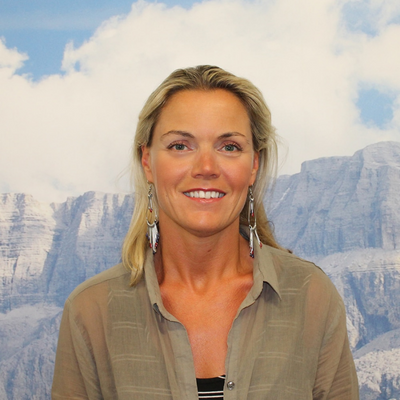
Written By
Samantha McCrow
Sam is a writer, hiker, swimmer, trail runner, volunteer lifesaver and adventure traveller. She brings 20+ years of marketing and communications experience to RAW Travel. Sam regularly shares stories and insights about the world's most iconic and rewarding hiking trails.

